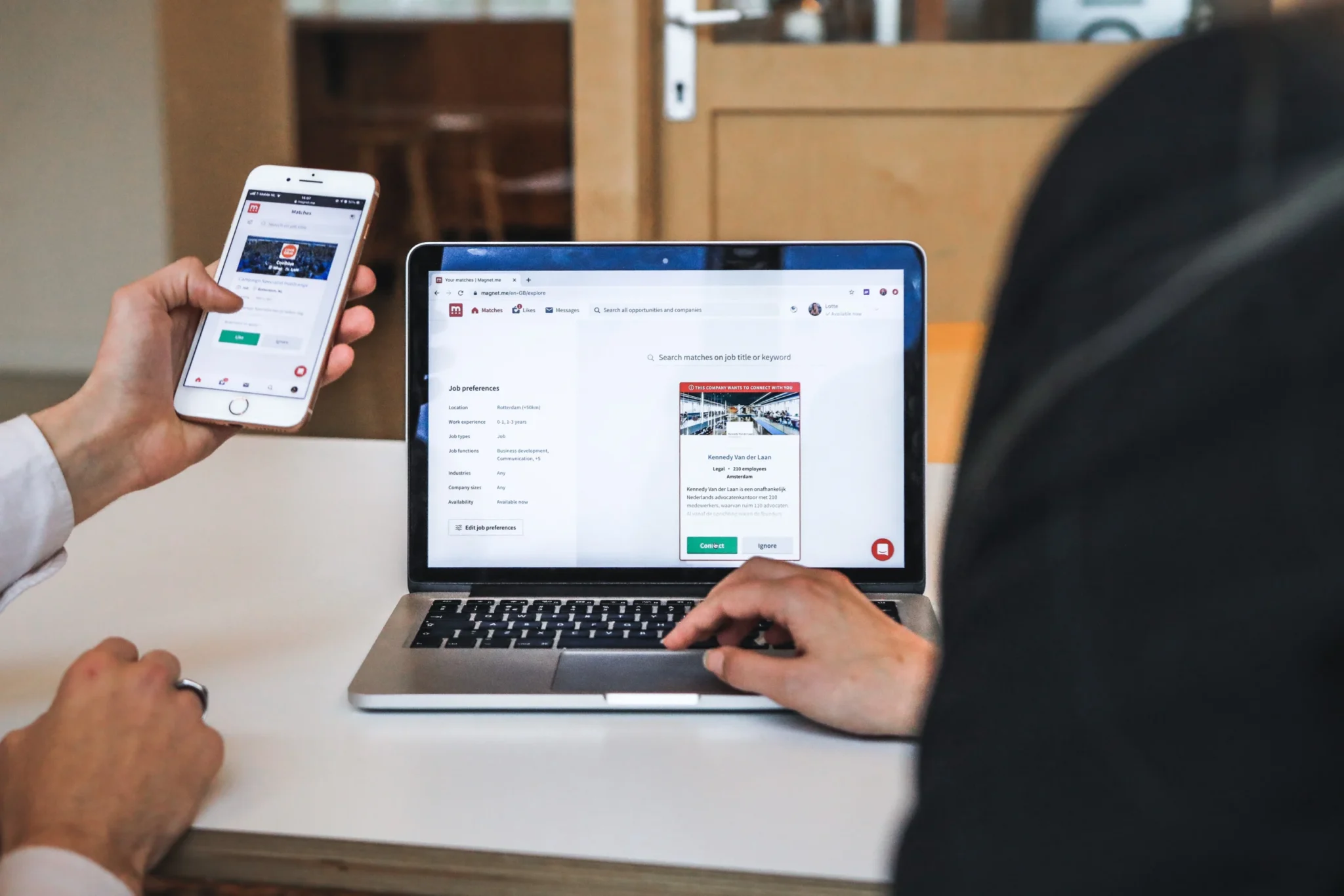Do you remember the days when you had to scan newspapers to see movie listings to know what was playing in the theater? Then, you’d have to go there and buy tickets to the show you wanted to see, which hopefully, wasn’t already full.
Cut to today where – if you’re a Marvel movie buff – you’d already know that Doctor Strange in the Multiverse of Madness releases less than a month from now. And your tickets are probably already booked at a day, place, and time that you prefer. All of which have been accomplished with minimal effort on your part.
The movie trailer was all over your social feeds for the past month. Ticket sales advertisements flooded your inbox ever since – and all it took was a few taps to set your movie-watching plans in place. Surely, it is now safe to say that communication has transcended form and gotten more contextual. Information is now abstracted from the medium and is no longer channel-dependent.
What is the omnichannel user experience?

Users interacting and transacting with businesses across a multitude of devices is not a new phenomenon anymore. We now see them commencing their interaction with one device and switching mid-way to another in a varied and unpredictable manner. Even in the B2B context, we’re seeing employees, partners, and suppliers seeking a similar level of access and flexibility across channels.
Omnichannel experiences are all about looping cross-channel engagements constantly to keep up with the users’ motivation and habits. According to NN, any organization with a multichannel ecosystem should aim that independent channel interactions must coordinate to create one cohesive, consistent customer experience and identified 5 key components of a successful omnichannel experience –
Consistent – this covers familiarity and confidence, learnability, efficiency, and trust.
Seamless – where the transitions (or handoffs) from one channel to the next involve zero or minimal overheads for the users.
Optimized for Context – incorporating helpful and usable context-specific elements necessary to create an exceptional user experience.
Orchestrated – referring to the planning or coordination of the journey to minimize user effort for future actions.
Collaborative – resolving limitations of an available interaction channel by reducing interaction cost on that channel and enriching existing interactions.
As technology takes a backseat and personal, physical, and social context determine the flow of communication, seamless omnichannel user experiences will become the way forward. Therefore, designing effective omnichannel experiences is a skill that UXers need to master.
3 tips to keep in mind when designing omnichannel experiences
Stick to a user-first approach

The key to designing seamless omnichannel user experiences is to keep the user in the center of the creative process right from the get-go. Doing so helps gain an in-depth understanding of various user groups and devices, along with the needs and expectations users have from each of those devices.
A mix of qualitative and quantitative research methods such as user observations, surveys, and user interviews will help amplify your understanding of user needs and help in defining the flow of information across multiple channels. The research data will help build accurate personas and build scenarios to showcase how users will use the application on different devices. Most importantly, it will help nix assumptions such as mobile users are always busy and distracted and prevent you from pursuing the wrong goals.
Mapping the journey of the user is crucial to designing the right multichannel experience. Ditch the organizational silos and instead group together elements that arise organically as part of the user’s actual interaction journey. Seek inspiration from My Disney Experience – a single point resource to plan a Disney vacation. It allows users to book resort hotels, plan their meals, make their theme park reservations, and book a Fast Pass or a Magic Band within a highly responsive mobile and desktop experience.
For example, most interactions commence with a point of interest, followed by onboarding (signing up for the service), operating (using the service), and renewing (re-subscribing to the service). User journey mapping is a great tool used to reveal important user insights such as how a customer came to be and what their next steps would look like.
Play to the strengths of the respective devices

Fans of the hugely successful sitcom, Modern Family, are sure to remember the episode “Connection Lost” where Claire makes use of FaceTime, iMessage, and other social networking services to try to get in touch with Haley after their fight. The seamless switch between a multitude of Apple devices to keep the flow of conversation was the highlight of the episode, which also received a lot of appreciation from fans and critics alike.
Likewise, users of the Starbucks Reward Program app also experience seamless transitions when it comes to interacting with their favorite coffee shop. While it remains heavily mobile-focused, it also enables users to check and reload their card using their website, or in-store with any change to the card or profile getting updated across all channels in real-time.
Creating device-specific experiences is how you can make users feel at ease during their interactions. Users hold a certain level of expectations from the application while using particular devices. Therefore, it is imperative to tap into the device strengths and enable device-specific functionality in order to deliver the best omnichannel experience.
There are several ways to design a user-focused omnichannel user experience by acknowledging the constraints of the device or taking advantage of device-specific capabilities:
- Data entry screens can be tricky to execute, depending upon the requirements of the process. But a thumb rule to remember is to only include fields that capture only the essentials, be it for desktops or mobile screens.
- Utilize relevant contextual data such as location sensors and geotagging, calendar data, and time to fill in default values in fields, saving users time.
- Voice commands and speech-to-text inputs can be put to optimal use when looking at a screen isn’t possible or ideal.
Enable seamless multichannel experiences

Multi-channel interactions that offer a fragmented experience are the leading cause of user frustration, impacting productivity, efficiency, and revenue. The device-to-device transitions have got to feel seamless and intuitive to the user and provide a consistent experience. This means consistency not just in terms of the look and feel of the user interface, but also in terms of data and functionality while shifting devices.
Users today not just want services to be available across devices, but also the continuity of the experience without any bumps. Therefore, synchronization is a key feature of seamless multichannel user experiences.
For example, the visitor visa application to the United Kingdom has the applicants fill out a detailed form spanning several pages that require in-depth details. However, once the user creates an account they can fill it out at their own pace and easily access it from any device using their login credentials. This stellar service system was designed by the UK Government Digital Services (GDS) team which won Design of the Year beating contenders in fashion, architecture, and product development.
As enterprises businesses seek to build products that engage customers, establish loyalty, and lead to revenue growth, seamless omnichannel experiences will lead the way. To ensure successful adoption, their product teams have to concentrate their efforts on designing a system that sustains itself consistently across platforms and fulfills user needs.










